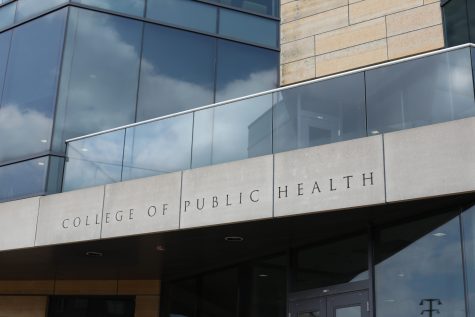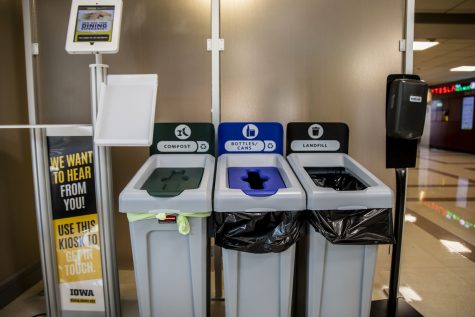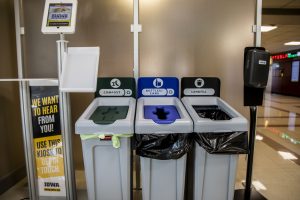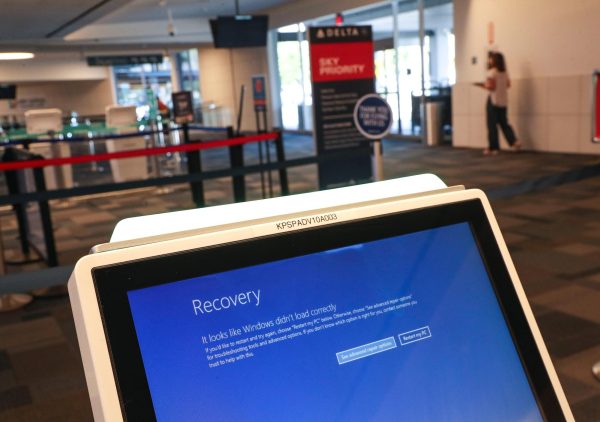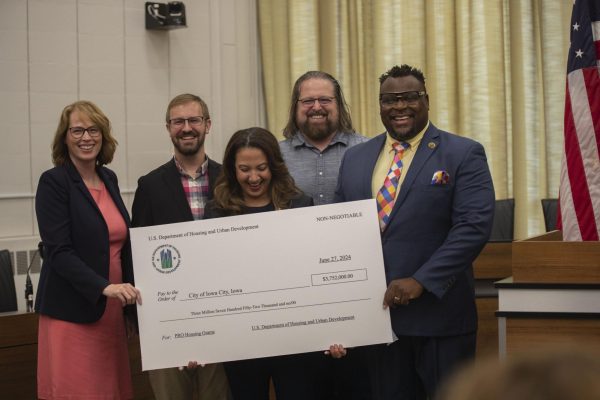UI intellectual and developmental disabilities center bridges gaps in community
A new University of Iowa Hospitals and Clinics center, the Hawkeye Intellectual and Developmental Disabilities Research Center, works to provide more treatment options, raise awareness in the community, and provide support for individuals and families throughout their lives.
University of Iowa Hospital and Clinics are seen Wednesday, Aug. 24, 2021.
August 31, 2021
The University of Iowa Stead Family Children’s Hospital Center for Disabilities and Development and the Iowa Neuroscience Institute are combining forces with researchers, clinicians, physicians, and scientists across the university campus to form a new center and advance care for Iowans with disabilities.
According to the Centers for Disease Control and Prevention, around 7 percent of children are diagnosed with a developmental disability. There are approximately 4.92 million individuals in the U.S. living with an intellectual disability, which is about 17 percent of the U.S. population, according to The Achievable Foundation.
The new center, the Hawkeye Intellectual and Developmental Disabilities Research Center, or Hawk-IDDRC, was created by faculty from around the university. Iowa Neuroscience Institute Director Ted Abel, and Lane Strathearn, director of developmental and behavioral pediatrics at UI Hospitals and Clinics, are co-directors of the center.
“Our main focus is to think about neurodevelopmental disorders across the lifespan,” Abel said. “You have children that appear with neurodevelopmental disorders at various times, and individuals continue to be impacted by challenges throughout their lifespan.”
The new disability research center is composed of three cores led by six other faculty members, Abel said. The main goal is to build clinical, translational, and basic research in neurodevelopmental disorders, to connect that with clinical care, and reach out to the community, he said.
The different cores — clinical and translational, epigenetics and genetics, and neural circuits and behavior — are connected to fund research projects, Abel said. This will help faculty develop new research projects that are available within the cores and to build the research community, he said.
The center will be funded for a five-year period by a $6.2 million grant from the National Institutes of Health. Abel said the researchers hope to build a stronger research community in the area of intellectual and developmental disabilities.
“We hope we can better connect with areas of expertise in other centers across the country to help individuals on the clinical side of things,” Abel said. “We also hope to build on the clinical resources for individuals and their families.”
One of the research projects is a smartphone app called Baby Steps that Strathearn created.
The app helps identify children who are being diagnosed with autism early on and see if researchers can identify early genetic markers.
Using the app, families can collect data in their own homes, fill out questionnaires, and take videos so clinicians can see how children behave in a home environment, rather than a clinical setting, Strathearn said.
Matthew O’Brien, a clinical assistant professor of pediatrics who is helping with the research, said the main goal of the center is to focus on a lifespan approach, helping individuals and families from before birth and into adulthood.
“The lifespan approach allows for early assessment and treatment, which is important in being able to monitor progress,” O’Brien said. “Getting treatment early allows for earlier interventions to help improve outcomes with employment and family development in the future.”
Additionally, the researchers hope to improve treatment plans, increase access to resources, and raise awareness and acceptance of disabilities in the community, O’Brien said.
“We are always learning more about how people learn, and looking at behavioral, psychological, and developmental changes,” O’Brien said. “The goal of the center is to focus primarily on community education and how we can improve awareness on how to assess and provide care for these patients.”




